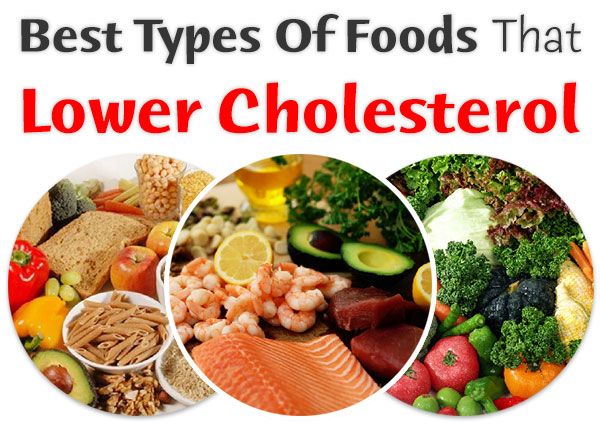Does chicken have a lot of cholesterol. Chicken and Cholesterol: Impact on Heart Health and Smart Dietary Choices
How does chicken consumption affect cholesterol levels. What parts of chicken contain the most cholesterol. Which cooking methods are best for maintaining healthy cholesterol. How can you enjoy chicken while managing your cholesterol intake.
Understanding Cholesterol and Its Role in the Body
Cholesterol is a waxy substance that plays a vital role in our body’s functions. It’s essential for building cell membranes, producing hormones, and aiding in vitamin D synthesis. While our liver naturally produces all the cholesterol we need, we also consume it through animal-based foods, including chicken.
However, when cholesterol levels become too high, it can lead to serious health issues. Nearly a third of American adults have high cholesterol, with less than a third of them keeping it under control. This makes understanding the cholesterol content in our food choices, including popular proteins like chicken, crucial for maintaining heart health.

Types of Cholesterol
- LDL (Low-Density Lipoprotein): Often called “bad” cholesterol, as it can build up in artery walls.
- HDL (High-Density Lipoprotein): Known as “good” cholesterol, it helps remove other forms of cholesterol from the bloodstream.
- Triglycerides: A type of fat in the blood that can contribute to arterial buildup.
Chicken’s Impact on Cholesterol Levels
Chicken is generally considered a lean meat option, especially when compared to red meats. However, its impact on cholesterol levels can vary depending on several factors. The part of the chicken consumed, whether the skin is removed, and the cooking method all play significant roles in determining its cholesterol content.
Does eating chicken increase cholesterol? While chicken does contain cholesterol, it generally has less than other fatty proteins like bacon or marbled steaks. The key is in the preparation and portion control. Skinless, white meat portions of chicken tend to have the lowest cholesterol and saturated fat content.

Cholesterol Content in Different Chicken Parts
Let’s compare the cholesterol content in different parts of grilled chicken (per 100 grams):
- Chicken breast (skinless): 85 mg
- Chicken thigh (skinless): 94 mg
- Chicken wing (skinless): 112 mg
- Chicken leg (skinless): 111 mg
As we can see, chicken breast contains the least amount of cholesterol among these options. It’s worth noting that these values can increase significantly if the skin is left on or if high-fat cooking methods are used.
Impact of Cooking Methods on Chicken’s Cholesterol Content
The way chicken is prepared can significantly affect its cholesterol content. Let’s examine how different cooking methods impact the cholesterol levels in a 100-gram serving of chicken breast:
- Grilled (skinless): 85 mg
- Fried with flour: 89 mg
- Fried with batter: 85 mg
- Roasted: 88 mg
While the differences may seem minimal, it’s important to consider that frying often involves additional fats, which can contribute to overall cholesterol intake. Grilling or roasting chicken without added fats is generally the healthiest option.

Strategies for Enjoying Chicken While Managing Cholesterol
Is it possible to include chicken in a cholesterol-conscious diet? Absolutely! Here are some strategies to help you enjoy chicken while managing your cholesterol intake:
- Choose skinless, white meat portions like chicken breast.
- Opt for grilling, roasting, or baking instead of frying.
- Control portion sizes – the American Heart Association recommends limiting servings to 3 ounces (about half a large chicken breast).
- Be mindful of added sauces or marinades, which can increase fat and cholesterol content.
- Incorporate chicken into meals with cholesterol-lowering foods like high-fiber vegetables, fruits, and whole grains.
Cholesterol-Lowering Foods to Pair with Chicken
According to the Mayo Clinic, certain foods can naturally help lower cholesterol levels. Pairing these with your chicken dishes can create heart-healthy meals:
- Oatmeal and other high-fiber foods
- Fish rich in omega-3 fatty acids
- Walnuts and almonds
- Avocados
- Olive oil
For example, a meal consisting of a small salad with sliced almonds and avocado, drizzled with olive oil, alongside 3 ounces of grilled chicken breast, can be both delicious and beneficial for cardiovascular health.

The Role of Saturated Fats in Cholesterol Management
When discussing cholesterol, it’s crucial to consider the role of saturated fats. The American Heart Association (AHA) emphasizes that both cholesterol and saturated fats contribute to heart disease risk, with saturated fats being considered more impactful than dietary cholesterol.
How do saturated fats affect cholesterol levels? Saturated fats can raise the levels of LDL (bad) cholesterol in the blood, potentially leading to the buildup of plaque in the arteries. This is why it’s important to consider not just the cholesterol content of chicken, but also its saturated fat content, especially when the skin is left on.
Saturated Fat Content in Chicken
Here’s a comparison of saturated fat content in different chicken parts (per 100 grams, skinless):
- Chicken breast: 1.1 g
- Chicken thigh: 2.3 g
- Chicken wing: 2.7 g
- Chicken leg: 2.5 g
As with cholesterol, chicken breast contains the least amount of saturated fat, making it the healthiest choice for those managing their cholesterol levels.

The Bigger Picture: Chicken in a Heart-Healthy Diet
While understanding the cholesterol content of chicken is important, it’s equally crucial to consider its place in an overall heart-healthy diet. Chicken can be a valuable part of a balanced eating plan, providing essential proteins, vitamins, and minerals.
How can you incorporate chicken into a heart-healthy diet? Here are some tips:
- Balance your plate: Make chicken a part of a meal rich in vegetables, fruits, and whole grains.
- Practice portion control: Stick to the recommended 3-ounce serving size.
- Choose lean cuts: Opt for skinless breast meat when possible.
- Prepare it healthily: Use cooking methods that don’t require additional fats, such as grilling, baking, or poaching.
- Flavor without fat: Use herbs, spices, and citrus to add flavor instead of high-fat sauces or marinades.
The Mediterranean Diet Approach
The Mediterranean diet, known for its heart-health benefits, includes moderate amounts of poultry. This eating pattern emphasizes:

- Plenty of fruits, vegetables, and whole grains
- Healthy fats like olive oil and nuts
- Fish and poultry
- Limited red meat
- Moderate consumption of dairy products
Incorporating chicken into a Mediterranean-style diet can be an excellent way to enjoy this protein while supporting heart health.
Beyond Cholesterol: Other Health Considerations of Chicken Consumption
While we’ve focused primarily on cholesterol, it’s worth considering other health aspects of chicken consumption. Chicken is a valuable source of several essential nutrients:
- Protein: Essential for muscle building and repair
- Vitamin B6: Important for brain development and function
- Niacin: Helps convert food into energy
- Selenium: An antioxidant that supports immune function
How does chicken compare to other protein sources in terms of overall health impact? When prepared healthily, chicken can be a better choice than red meats, which are often higher in saturated fats. However, plant-based proteins like beans and lentils offer the advantage of being cholesterol-free while providing fiber and other beneficial nutrients.

Potential Risks of Overconsumption
While chicken can be part of a healthy diet, it’s important to be aware of potential risks associated with overconsumption:
- Antibiotic resistance: Some chickens are raised with antibiotics, which can contribute to antibiotic resistance in humans.
- Foodborne illnesses: Improper handling or cooking of chicken can lead to infections from bacteria like Salmonella or Campylobacter.
- Environmental impact: Large-scale poultry farming can have significant environmental consequences.
These factors underscore the importance of choosing high-quality, responsibly sourced chicken and preparing it safely.
Making Informed Choices: Reading Labels and Understanding Nutrition Facts
Navigating the supermarket aisles can be overwhelming when trying to make heart-healthy choices. Understanding how to read nutrition labels is crucial for managing cholesterol intake through diet.
What should you look for on chicken product labels? Here are some key points:
- Serving size: Be aware that the nutritional information is typically based on a specific serving size.
- Total fat: Look for options with lower total fat content.
- Saturated fat: Choose products with less saturated fat.
- Cholesterol: Compare the cholesterol content between different products.
- Sodium: High sodium intake can contribute to heart disease risk, so opt for lower-sodium options when possible.
Remember that “low-fat” or “reduced-fat” labels don’t always mean the product is the healthiest choice. These products may have added sugars or sodium to compensate for flavor loss.
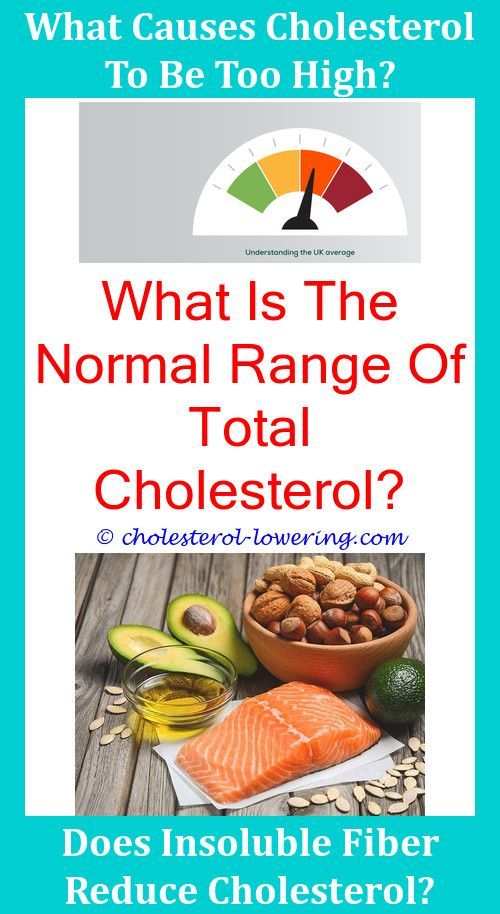
Decoding Common Chicken Product Labels
Here’s a quick guide to understanding common labels on chicken products:
- “Free-range”: Chickens have access to the outdoors, but this doesn’t necessarily mean a higher quality product.
- “Organic”: Chickens are raised without antibiotics and fed organic feed.
- “No antibiotics”: Chickens were raised without the use of antibiotics.
- “Natural”: This term is not strictly regulated and doesn’t necessarily indicate a healthier product.
While these labels can provide some insight into how the chicken was raised, they don’t directly correlate with cholesterol content. The most important factors for cholesterol management remain the cut of chicken, whether it includes skin, and how it’s prepared.
Practical Tips for Cholesterol-Conscious Chicken Consumption
Armed with knowledge about chicken’s cholesterol content and its place in a heart-healthy diet, let’s explore some practical tips for incorporating chicken into your meals while managing cholesterol levels:

- Experiment with herbs and spices: Use flavorful herbs and spices to season your chicken instead of high-fat sauces or marinades. Rosemary, thyme, garlic, and lemon zest can add delicious flavor without extra cholesterol.
- Try chicken alternatives: Occasionally substitute chicken with plant-based proteins like beans, lentils, or tofu. These options are cholesterol-free and high in fiber.
- Practice mindful eating: Pay attention to your portion sizes and eat slowly. This can help you feel satisfied with less food.
- Plan your meals: Incorporate chicken into well-balanced meals that include plenty of vegetables, whole grains, and healthy fats.
- Cook in batches: Prepare larger quantities of grilled or roasted chicken and use leftovers in salads or sandwiches throughout the week. This can help you avoid the temptation of less healthy fast-food options.
Recipe Ideas for Heart-Healthy Chicken Dishes
Here are a few recipe ideas that incorporate chicken in a heart-healthy way:
- Greek-style chicken skewers with a quinoa and vegetable salad
- Baked chicken breast with a crispy herb crust, served with roasted sweet potato and steamed broccoli
- Chicken and vegetable stir-fry with brown rice, using minimal oil and plenty of colorful vegetables
- Chicken and bean chili, loaded with fiber-rich beans and vegetables
- Grilled chicken Caesar salad with a homemade, lower-fat dressing and plenty of romaine lettuce
Remember, the key to managing cholesterol through diet is not just about avoiding certain foods, but about creating a balanced, varied, and enjoyable eating plan. Chicken can certainly be a part of that plan when chosen and prepared wisely.
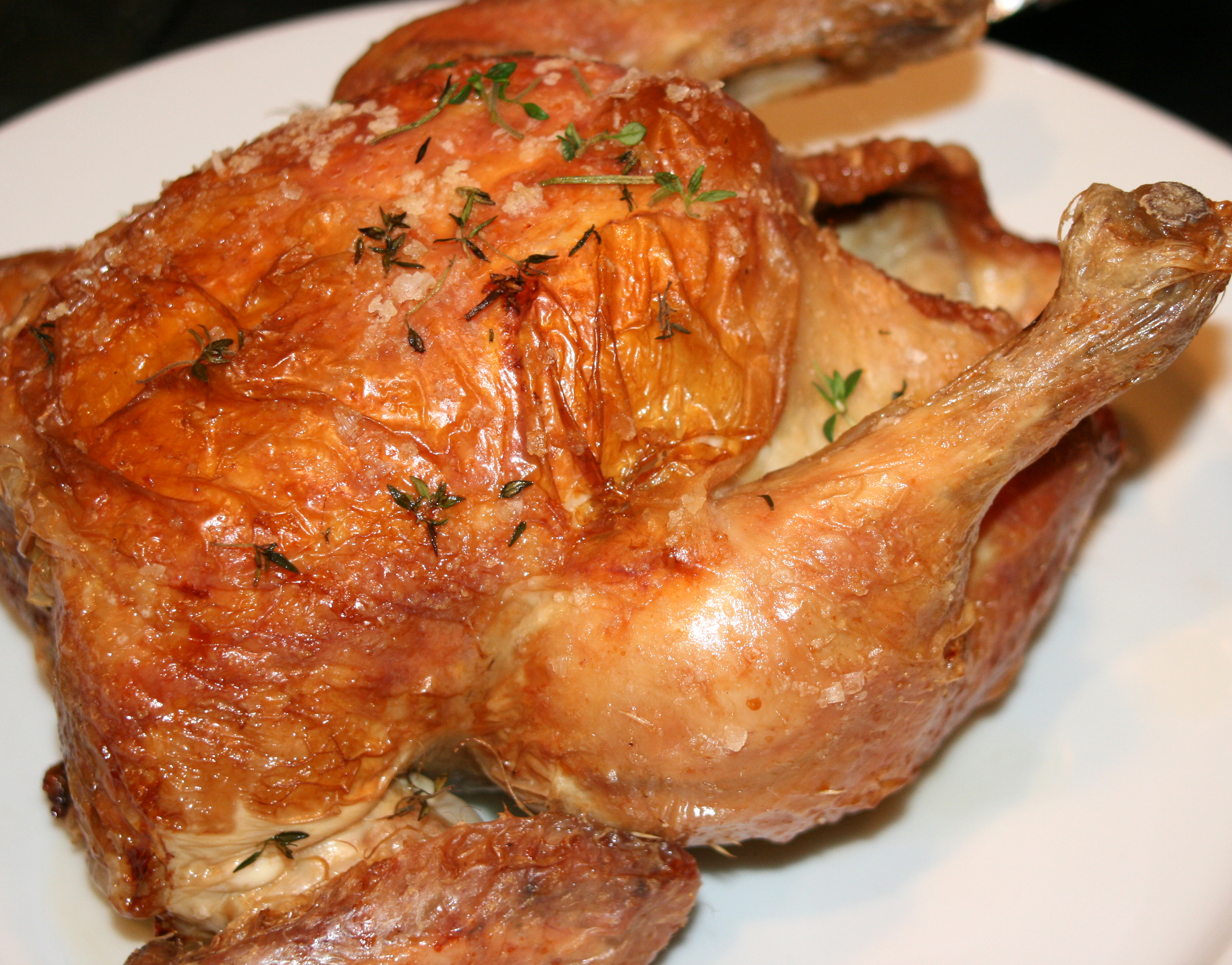
Monitoring Cholesterol Levels: The Importance of Regular Check-ups
While making dietary changes is crucial for managing cholesterol levels, it’s equally important to monitor your progress through regular health check-ups. Regular cholesterol screenings can help you and your healthcare provider assess the effectiveness of your dietary changes and determine if additional interventions are needed.
How often should you have your cholesterol checked? The American Heart Association recommends that adults aged 20 or older have their cholesterol checked every 4-6 years. However, if you have risk factors for heart disease or have been diagnosed with high cholesterol, your doctor may recommend more frequent testing.
Understanding Your Cholesterol Test Results
A standard lipid panel will measure:
- Total cholesterol
- LDL (bad) cholesterol
- HDL (good) cholesterol
- Triglycerides
Your healthcare provider will interpret these results in the context of your overall health, family history, and other risk factors. They can then work with you to develop a comprehensive plan for managing your cholesterol levels, which may include dietary changes, increased physical activity, and in some cases, medication.

Remember, managing cholesterol is a long-term commitment to your health. While making smart choices about chicken consumption is a step in the right direction, it’s part of a broader approach to heart health that includes a balanced diet, regular exercise, and ongoing medical supervision.
Справочник по содержанию холестерина в курице
Медицинский обзор Пегги Плетчер, MS, RD, LD, CDE — Анна Шефер — Обновлено 16 марта 2016 г. хорошо не всегда… хорошо. Когда дело доходит до курицы, кусочки, которые вы едите, и то, как они приготовлены, играют важную роль в том, как они влияют на ваше тело и общее состояние здоровья.
Почти треть взрослых американцев имеют высокий уровень холестерина, и менее трети из них держат его под контролем. Для контроля уровня холестерина и предотвращения его слишком высокого уровня требуется тщательная и здоровая диета, частью которой, безусловно, может быть курица — тщательно отобранная и приготовленная.
Холестерин является необходимым веществом, и весь необходимый нам холестерин вырабатывается нашим организмом. Но мы также получаем холестерин из пищи, а именно из продуктов животного происхождения. Курица, конечно же, является одним из этих продуктов животного происхождения, и хотя в ней меньше холестерина, чем в других жирных белках, таких как бекон или стейки с полосками жира, она все же способствует общему уровню холестерина.
Как холестерин, так и насыщенные жиры повышают риск сердечных заболеваний, по данным Американской кардиологической ассоциации (AHA), хотя насыщенные жиры считаются более важными, чем содержание холестерина.
Количество насыщенных жиров и холестерина в курице зависит в первую очередь от того, удаляете ли вы кожу, а затем от того, какой кусок (или кусочки) вы выберете. Давайте посмотрим, как сравнить разные куски курицы-гриль:
Поделиться на Pinterest
Если наша курица приготовлена таким же образом, а мясо измерено в одинаковом количестве (100 граммов), мы можем увидеть, что мясо грудки содержит наименьшее количество холестерина. В целом птица без кожи и куски белого мяса содержат меньше холестерина и насыщенных жиров.
Итак, мы знаем, что, вообще говоря, кусок куриной грудки содержит меньше холестерина, чем любой другой кусок. Но курица не подается только одним способом. Вот как изменяется количество холестерина в куске куриной грудки (100 грамм) в зависимости от приготовления.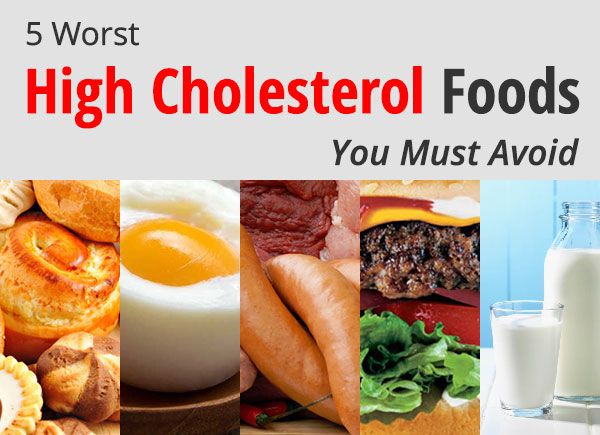
- Жарена с мукой: 89 мг
- Жарена с жидким тестом: 85 мг
- Жара Если вы обычно добавляете что-то к курице, например соус, уровень холестерина может легко возрасти. Удаление кожи снизит количество потребляемого вами холестерина и жира.0003
Точно так же важны и ваши порции. AHA рекомендует ограничивать одну порцию всего 3 унциями, что составляет примерно половину большой куриной грудки.
Есть несколько способов снизить уровень холестерина, и умение наслаждаться любимыми блюдами, такими как курица, — это только один из них.
По данным клиники Майо, некоторые продукты могут естественным образом снизить уровень холестерина. Сочетая их со случайной порцией куриной грудки, вы можете значительно снизить уровень холестерина. Они рекомендуют:
- продуктов с высоким содержанием клетчатки, таких как овсянка
- Fish
- Грецкие орехи и миндаль
- Avocados
- Оливковое масло
Управление Holesterol: Almonds Elege Slieded Avlied Avlied Averade Avlied Averade Avlied Averade Avlied Averade Avliede Selable.
 , столовая ложка оливкового масла, сбрызнутая сверху, и 3 унции жареной куриной грудки — это не только вкусный обед, но и отличный способ улучшить здоровье сердечно-сосудистой системы.
, столовая ложка оливкового масла, сбрызнутая сверху, и 3 унции жареной куриной грудки — это не только вкусный обед, но и отличный способ улучшить здоровье сердечно-сосудистой системы.Уровни холестерина в цыпленке — по частям и способу приготовления
Холестерин необходим для нормального функционирования организма, но его избыток может вызвать серьезные проблемы со здоровьем. Употребление курицы в составе сбалансированной диеты может помочь контролировать уровень холестерина, но это зависит от того, какую часть курицы потребляет человек и как он ее готовит.
Печень естественным образом вырабатывает холестерин в достаточных количествах для роста топливных клеток и выработки гормонов, среди прочих процессов. Люди получают дополнительный холестерин с пищей. Молочные продукты и мясо, включая птицу, содержат холестерин, который потенциально может увеличить его уровень до нездорового уровня.
Курица обычно представляет собой нежирное мясо с низким содержанием жира.
 Однако уровень холестерина в курице варьируется в зависимости от того, какую ее часть потребляют люди, присутствует ли кожа и как человек ее готовит.
Однако уровень холестерина в курице варьируется в зависимости от того, какую ее часть потребляют люди, присутствует ли кожа и как человек ее готовит.В этой статье будут рассмотрены:
- функция холестерина в организме
- вред для здоровья от слишком большого количества холестерина
- содержание холестерина в курице по частям
- уровень холестерина в популярных блюдах из курицы
- как снизить уровень холестерина
Холестерин присутствует в каждой клетке организма. Организм использует его для выработки гормонов и витаминов, а также для переваривания пищи. Организм вырабатывает весь необходимый ему холестерин в печени, но люди также потребляют диетический холестерин с пищей.
Когда слишком много холестерина попадает в кровоток, он смешивается с другими продуктами и образует бляшки, блокирующие артерии. Этот налет может способствовать образованию тромбов, стенокардии, сердечному приступу, инсульту, заболеваниям сонных артерий и заболеваниям периферических артерий.

Несколько факторов могут увеличить риск высокого уровня холестерина. Он может передаваться по наследству, поэтому определенную роль могут играть наследственные факторы. Раса также может быть фактором. У чернокожих американцев часто более высокий уровень холестерина, чем у белых американцев, поскольку расизм, стрессовые факторы окружающей среды и другие социальные детерминанты здоровья могут по-разному влиять на людей.
Избыточная масса тела также увеличивает риск развития у человека высокого уровня холестерина. Уровень холестерина обычно повышается с возрастом.
Курица – постное мясо, если снять с нее кожу. Кожа на курице может содержать 80% от общего количества жировых калорий. Уровень холестерина зависит от порции курицы, которую потребляет человек. Если человек ищет самую постную часть мяса, он должен выбрать грудку.
Уровень холестерина в каждой части цыпленка (сырого):
- грудка, 100 г (г), без кожи: 73 миллиграмма (мг)
- грудка, 100 г, с кожей: 64 мг
- бедро, 100 г , с кожей: 98 мг
- Бедро, 100 г без кожи: 94 мг
- Окорочок, 100 г с кожей: 93 мг
- Окорок, 100 г, без кожи: 91 мг
- Крыло, 100 г: 111 мг
- Спинка, 100 г, только мясо: 81 мг
Хотя холестерин важен для организма, его избыток может иметь пагубные последствия.
 По этой причине диета с низким содержанием холестерина важна для всех, кто заинтересован в контроле потребления холестерина.
По этой причине диета с низким содержанием холестерина важна для всех, кто заинтересован в контроле потребления холестерина.То, как человек готовит курицу, может повлиять на количество содержащегося в ней холестерина. Например, один и тот же кусок курицы будет иметь разное содержание холестерина в зависимости от того, готовит ли его кто-то на гриле или панирует и жарит в масле.
Вот несколько наиболее популярных способов приготовления цыплят и среднее содержание в них холестерина:
- жареный цыпленок, только мясо, без кожи 100 г: 94 мг
- жареный цыпленок, мясо и кожа, с мукой, 100 г : 90 мг
- жареный цыпленок, только мясо, 100 г: 75 мг
- жареный цыпленок, мясо и кожа, 100 г: 76 мг
- жареный цыпленок, без кожи, 100 г: 104 мг
There are lifestyle and варианты лекарств для снижения уровня холестерина у человека. Врач может назначить комбинацию обоих, если высокий уровень холестерина вызывает беспокойство или если у кого-то есть диагноз высокого уровня холестерина.

Образ жизни включает:
- Диета: Ограничение насыщенных жиров и трансжиров может помочь снизить уровень холестерина. Соблюдение диеты, богатой разнообразными питательными продуктами, такими как фрукты, овощи, цельнозерновые продукты и нежирное мясо, также может помочь.
- Поддержание умеренного веса: Лишний вес и объем талии более 40 дюймов для мужчин и 35 дюймов для женщин создают повышенные факторы риска. Сочетание сниженного уровня холестерина липопротеинов высокой плотности (ЛПВП), высокого уровня триглицеридов и повышенного веса подвергает человека риску развития метаболического синдрома. Это группа состояний, которые повышают риск инсульта, диабета и ишемической болезни сердца.
- Активность: По данным Центров по контролю и профилактике заболеваний (CDC), люди должны стремиться к физической активности умеренной интенсивности не менее 150 минут в неделю.
- Управление стрессом: Регулярный или хронический стресс может повысить уровень «плохого» холестерина в сердечно-сосудистой системе и снизить уровень «хорошего» холестерина.


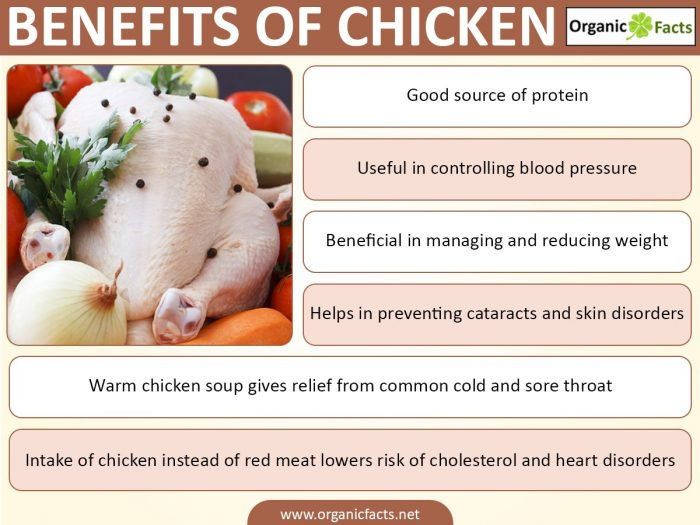 , столовая ложка оливкового масла, сбрызнутая сверху, и 3 унции жареной куриной грудки — это не только вкусный обед, но и отличный способ улучшить здоровье сердечно-сосудистой системы.
, столовая ложка оливкового масла, сбрызнутая сверху, и 3 унции жареной куриной грудки — это не только вкусный обед, но и отличный способ улучшить здоровье сердечно-сосудистой системы.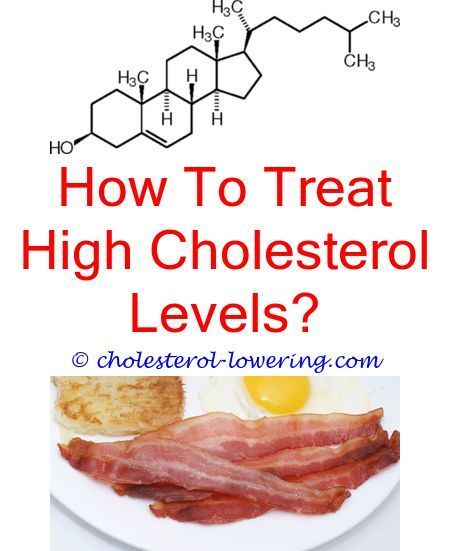 Однако уровень холестерина в курице варьируется в зависимости от того, какую ее часть потребляют люди, присутствует ли кожа и как человек ее готовит.
Однако уровень холестерина в курице варьируется в зависимости от того, какую ее часть потребляют люди, присутствует ли кожа и как человек ее готовит.
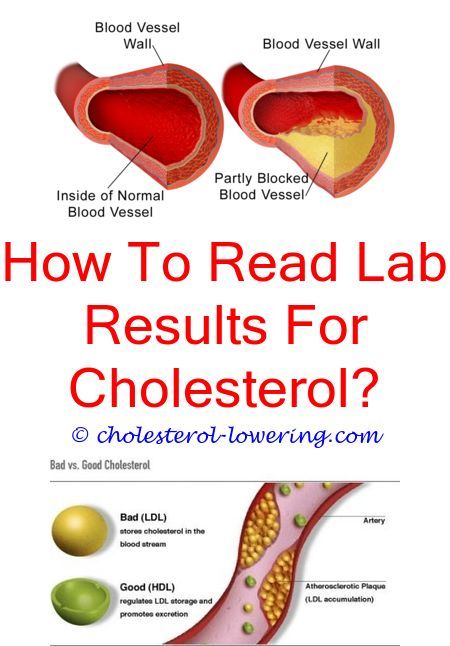 По этой причине диета с низким содержанием холестерина важна для всех, кто заинтересован в контроле потребления холестерина.
По этой причине диета с низким содержанием холестерина важна для всех, кто заинтересован в контроле потребления холестерина.